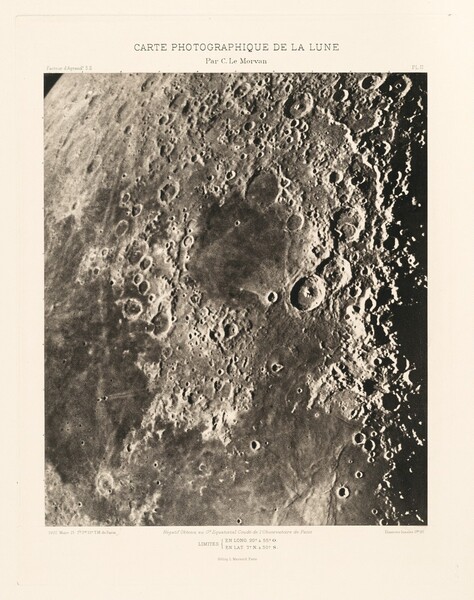THE MOON
By:
January 10, 2024
A series dedicated to poems, published c. 1900–1935, the Radium Age sf-adjacent themes of which include: dystopia and utopia, far-out mathematics and the fourth dimension, Afro-futurism, catastrophe, future war, new technologies, scientific breakthrough, dehumanization, cosmic awe, disenchantment and unseen forces, unknowable aliens and singularity. Research and selection by Joshua Glenn; thematic index here.

Ghast mass of ice, thou tomb
Once a live womb
Teeming to birth;
Even as Earth.
Thou, even as
Earth, from the primal mass
Swirled into space,
Folded thy shrunken face,
Buckled thy molten base,
Till seas boil and roar
Where crags smoke and soar
Out of thy blazing core.
Thence to thy Cambrian night,
Silurian trilobite,
Darting belemnite,
Gigantic dinosaur,
Swooping thy desolate shore
Where the sheer course is
Of the tapir-toed horses,
Upward to shape
Man out of ape,
Out of a beast
Poet and priest.
Now thou art led
On a viewless thread
Round Earth new-born, with thy cargo of dead,
That a bird should sing
In the heart of spring,
Of winter waiting to shatter her wing.
Thou floating tomb,
Thou withered womb,
Thou pale Cassandra of Troyland doom,
I who rest
At the burning breast
Of beauty fling thee a golden jest.
Go slay with slight,
Stolen might,
Lark and linnet, but spare the kite
Or ever he harry thee out of night.
— Collected in Branford’s Titans and Gods (1922).
Prior to the Apollo mission research there were three theories about how the Moon formed. The evidence returned from these missions gave us today’s most widely accepted theory.
The fission theory suggests Earth had been spinning so fast that some material broke away and began to orbit the planet. This seems to be the theory that Branford is dramatizing here.
The giant-impact theory is most widely accepted today. This proposes that the Moon formed during a collision between the Earth and another small planet. The debris from this impact collected in an orbit around Earth to form the Moon.
PS: Branford’s poetry shows England’s Georgian and modernist movements “being fused together to create something imagistic and precise while retaining one eye on the literary traditions of the past.” — Oliver Tearle.
RADIUM AGE PROTO-SF POETRY: Stephen Spender’s THE PYLONS | George Sterling’s THE TESTIMONY OF THE SUNS | Archibald MacLeish’s EINSTEIN | Thomas Thornely’s THE ATOM | C.S. Lewis’s DYMER | Stephen Vincent Benét’s METROPOLITAN NIGHTMARE | Robert Frost’s FIRE AND ICE | Aldous Huxley’s FIFTH PHILOSOPHER’S SONG | Sara Teasdale’s “THERE WILL COME SOFT RAINS” | Edith Södergran’s ON FOOT I HAD TO… | Robert Graves’s WELSH INCIDENT | Nancy Cunard’s ZEPPELINS | D.H. Lawrence’s WELLSIAN FUTURES | & many more.
